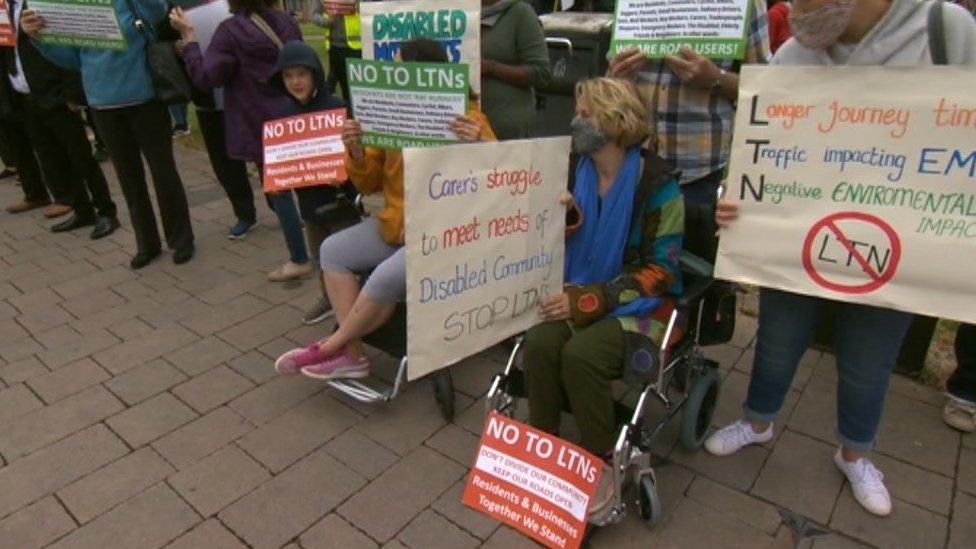ANPR cameras could be used in Oxford's controversial low-traffic zones
- Published

Council leader Liz Leffman said the authority is "committed" to increasing access for some people in the zones
Emergency services and disabled motorists could be able to travel through restrictions installed in controversial traffic-calming schemes.
Low Traffic Neighbourhoods (LTNs) were made permanent in Cowley in Oxford in July and others are being trialled.
But bollards and planters used to block roads have been routinely vandalised.
Oxfordshire County Council's leader Liz Leffman said it is "committed" to using number plate recognition cameras to allow some people through barriers.

The council replaced bollards in one of the LTNs after they were melted to the ground in July
Mrs Leffman confirmed there are no further plans for any new LTNs in Oxford or Oxfordshire, in an interview with the BBC.
"We see now there are people with disability badges who want to access their homes so one of the things we are looking at is number plate recognition," she said.
"That will help enormously because it means that people will then register their cars with us and will be allowed to drive through these areas."
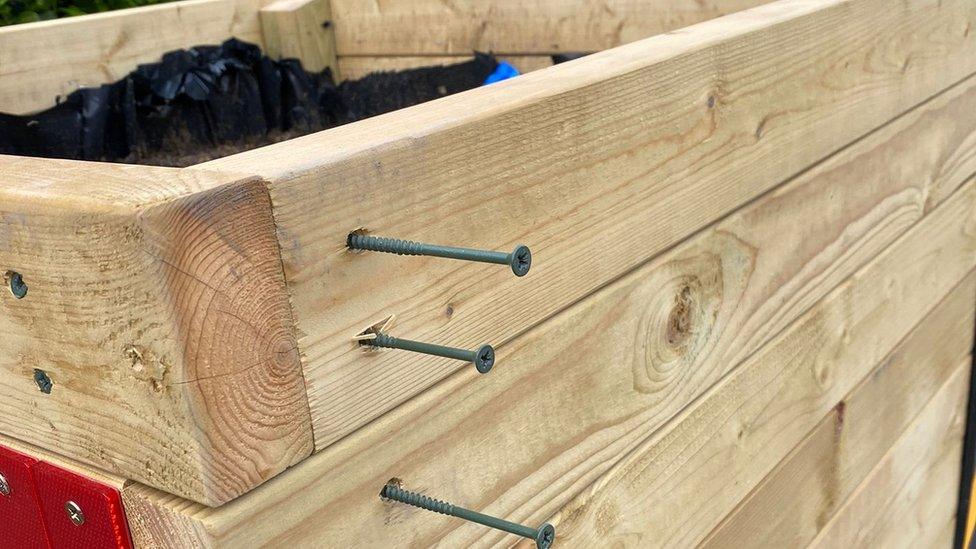
County councillor Damian Haywood previously said residents had also reported power tools being used to dismantle the wooden planters
She said the public would be consulted about the potential use of cameras in the coming months.
"There will be consultation, there will be engagement with the local community before we put that in but it's something we're committed to doing," she added.
LTNs are designed to allow residential access to roads but prevent them being used as shortcuts.
They have been in place in Church Cowley, Temple Cowley and Florence Park since March 2021 and were confirmed as permanent last month.
A six-month trial for Divinity Road, St Clement's and St Mary's started in May.
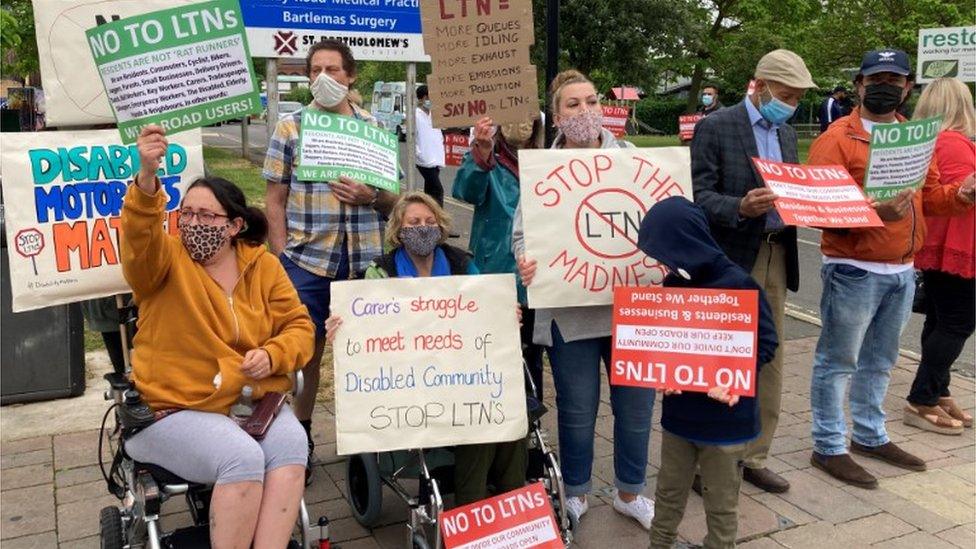
Protesters have previously said LTNs divide communities and make travelling harder for disabled motorists

Follow BBC South on Facebook, external, Twitter, external, or Instagram, external. Send your story ideas to south.newsonline@bbc.co.uk, external.
- Published14 July 2022
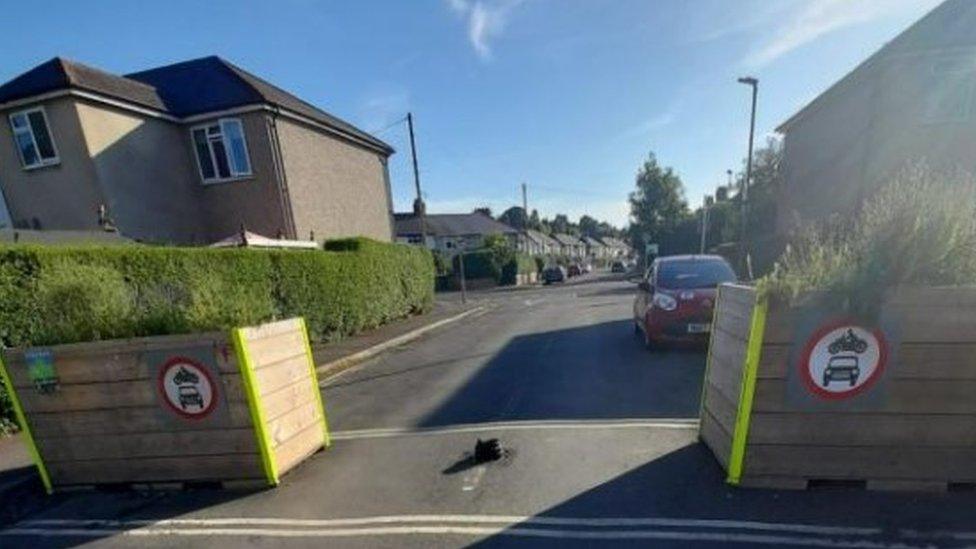
- Published4 July 2022

- Published13 June 2022

- Published27 May 2022

- Published22 May 2022

- Published20 May 2022
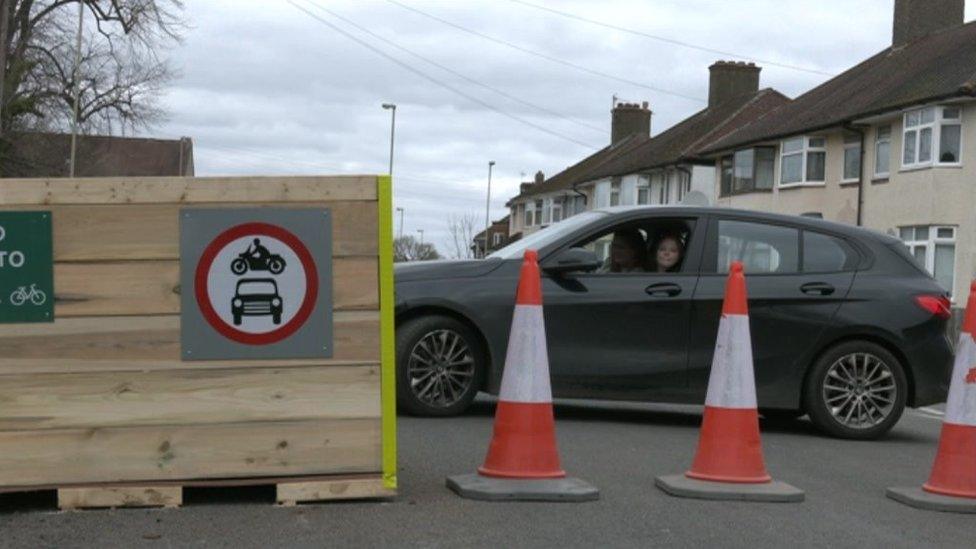
- Published4 March 2022
